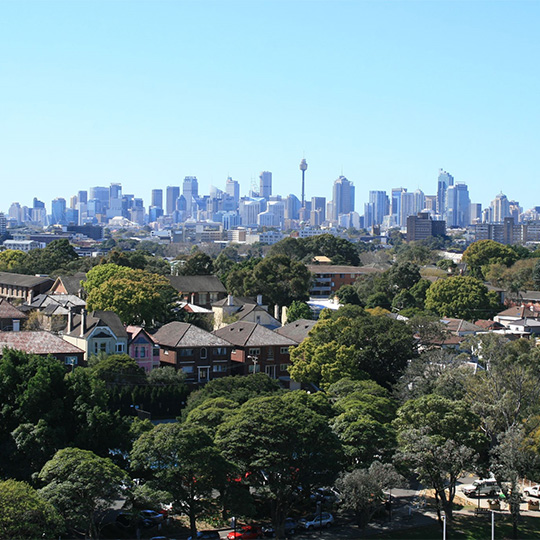Indian state administrations are intensifying their efforts to combat climate change. To make the subnational climate discourse in India stronger, Climate Group is profiling political leadership in the states by organising strategic convenings, dialogues and high-level forums. A key part of this effort is the Subnational Leadership Interview Series. The aim of the series is to spotlight state climate leaders, shining a light on their practices and solutions on climate change.
The following interview is with James Sangma, former Environment and Forest Minister of Meghalaya, on Meghalaya’s climate ambition, action, and leadership. Meghalaya has recently joined the global Under2 Coalition, becoming the seventh Indian state to be part of the largest network of states and regional governments in the world committed to achieving net zero emissions by 2050.
Located in India’s Northeast region, the state is ecologically diverse with 75% forest cover. In recent years, however, the forest cover has significantly reduced due to industrial activities like timber logging, coal mining, and sand mining. This deforestation has had a severe environmental impact.
Read the full interview below:
- India’s ambition is to reach net zero by 2070. How is Meghalaya gearing up to meet this ambition? Are there preparations to set a state level net zero goal in the near future?
Meghalaya is a unique forest economy. The state is among the top 24 unique biodiversity hotspots across the world, making it one of the most vibrant ecological and biotic regimes in India and the world. Together with Arunachal Pradesh, Meghalaya also forms one of the largest carbon sinks of India and is also most at-risk to climate change in the northeast region of the country.
We’re currently a carbon negative state and are ahead of the net zero ambitions set by other states on emissions. But climate change is an existential reality for us as our economy and livelihoods are climate dependent. We’ve taken a different approach for climate adaptation by evolving our own equivalent of a net zero ambition. This is in the form of a new development concept called the ‘Environment State’. It is a five-body strategic framework with the objective of integrating nature into economic planning and creating a new paradigm of nature-based economics.
We realise that the core issue of our economy is that it is a deforestation driven economy. We must transform it into a regenerative, nature-positive economy. This would require us to redevelop and prototype a new brand of nature-based economics and value chains.
[Refer to this commentary piece for more.]
2. States are in the process of revising their State Action Plan on Climate Change (SAPCC). Can you share key changes in Meghalaya’s updated version that reflects the state’s enhanced climate ambitions?
Meghalaya’s climate ambitions are to look at climate action as an opportunity and create viable economics around it. We want to look at ecological regions in the Northeast as a special Climate Action Zone (just like India’s Special Economic Zones) with incentives, subsidies for climate sensitive brands, products, and organisations.
The Environment State’s five-point framework are as follows:
- Nature asset registry – We are looking at using hyperspectral technology to assess the granular level of climate and ecosystem services (these are a range of services viz. water regulation, climate, soil erosion regulation, etc. that a forest provides to which value is being proposed to be assigned) of our forests. Further, assessing outcomes of these climate services to create a new economic projection of our forests- when preserved and conserved. Example: world’s first biodiversity heatmap is currently being made to create an indigenous species directory of our biodiversity and make a very granular assessment of its ecosystem service.
- Nature banking – Using the pilot and hyperspectral technology, we will be able to assess the accurate economic value of our forests and biodiversity and create new financial instruments. For example, carbon farming for regenerative agriculture and to reinvigorate our soil as additional carbon sink.
- Nature-based legislation – We realised that nature should be brought into the legislative ambit and there needs to be a legislative spotlight on rights of nature to bring about a perception change. We are drawing up the contours of a Climate Emergency legislation with personhood status for our forests, bio-patents and various other legislative mechanisms to create urgent action around climate change and nature.
- Nature-based livelihoods – We are rethinking our natural inventory to create a slew of conservation-based livelihoods. Innovative eco-tourism models such as forest therapy, forest wellness and forest apothecary are being prototyped based on our environmental traditions. They will cater as premium eco-experiences. We are also reinventing our agricultural inventory to connect to climate sensitive value chains. For instance, using pineapples for vegan leather.
- A pilot of ‘Conservation Basic Income’ has begun with more than 14,000 youth also being trained in forest management. Public sensitisation – We’ve realised that our nature-based lifestyle needs to be the cornerstone of our development strategy. We’re dedicating our public urban spaces to mainstream the dialogue about climate change.
For example, we’re creating India’s first climate change museum to promote awareness and create a cultural landmark. This museum is dedicated to the environment in Northeast India.
Apart from all the above, we are looking at using artificial intelligence (AI) to predict forest fires for a more urgent response, and utilising nature-based solutions like algae to clean up our rivers. [To know more read here and here]
3. How important is it to involve communities for catalysing climate action? Can you highlight a community-oriented climate action initiative in your state?
One of Meghalaya’s unique features is that the government owns only 7% of the land in the state. Most of the forests are managed by the communities (Dorbars, Nokmas) and, therefore, government intervention follows a bottom-up approach involving the local communities. We have sacred groves, sacred forests which are worshiped by communities and the state is replete with nature-inspired spirituality within communities.
We believe that a decentralised, self-managed response is the best response to counter the cross-civilisation threat that is climate change. We’re trying to inculcate a more participatory form of governance while having minimum government involvement in this process. We also initiated a traveling climate change panchayat [village government] to spread awareness about climate change and would like to create a cadre for localised climate action plans.
The Climate Change Museum will be our community-led initiative where communities will teach the world about the environment and impacts of climate change. Scientists are working with communities to gather data on age-old indigenous native species to create a digital library.
4. Can you share an example where your state has accessed national / global finance beyond the state’s budgetary allocation to undertake a climate action initiative? How important do you think is such financial support in your state’s context? What are the challenges inhibiting access to climate finance?
I think it is critical for states like us to first create a strategic roadmap for finance. There is a global narrative of climate change as an energy transition but in reality, it involves a major transformation of society. From infrastructure to lifestyle, there needs to be a reimagination of it all.
Meghalaya – through its new framework – is looking at creating an inventory of its natural assets and assessing the economic cost of its services to create new financial tools and secure funds.
The State is looking at developing a new revenue model around conservation of nature and climate action, ranging from carbon farming and regenerative agriculture to ecosystem services of its forests.
A brand-new paradigm of nature and biodiversity economics will support in accessing global finances. Meghalaya is also looking at creating its own carbon market framework as a new revenue source.
It is critical for the state to first have a detailed registry, economic projections and sectoral plans of its climate action levers (forest, agriculture, biodiversity, lifestyle) to create for global green capital and create a more data-driven voice for conservation finance. [To know more also read here]
5. What does a just and equitable transition mean for your government and how is the state administration achieving it?
I have been very vocal about the climate change narrative been largely driven by the Global North and portrayed as a technological and energy transition. It is critical for the Global South to have proper representation, as it carries a climate debt far greater than its contribution to this crisis.
Environment State is our counter to the net zero based framework, wherein forests and conservation have equal representation along with carbon capture technologies. This is where nature-based solutions and forests – earth’s original climate change mitigation system – gets the spotlight alongside genetically sequenced crop species. I support technology but I want the overreliance on technology to be replaced by indigenous knowledge and systems that can be adapted as the climate action framework.








